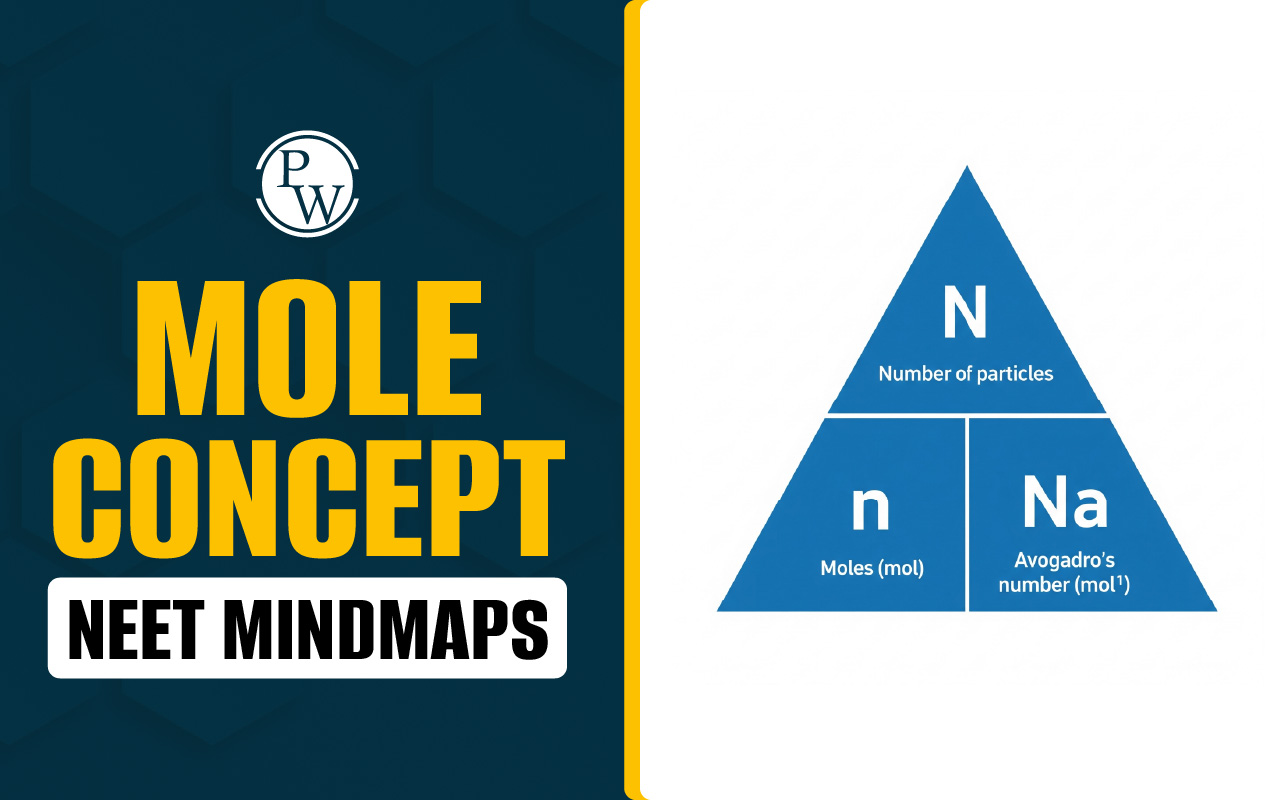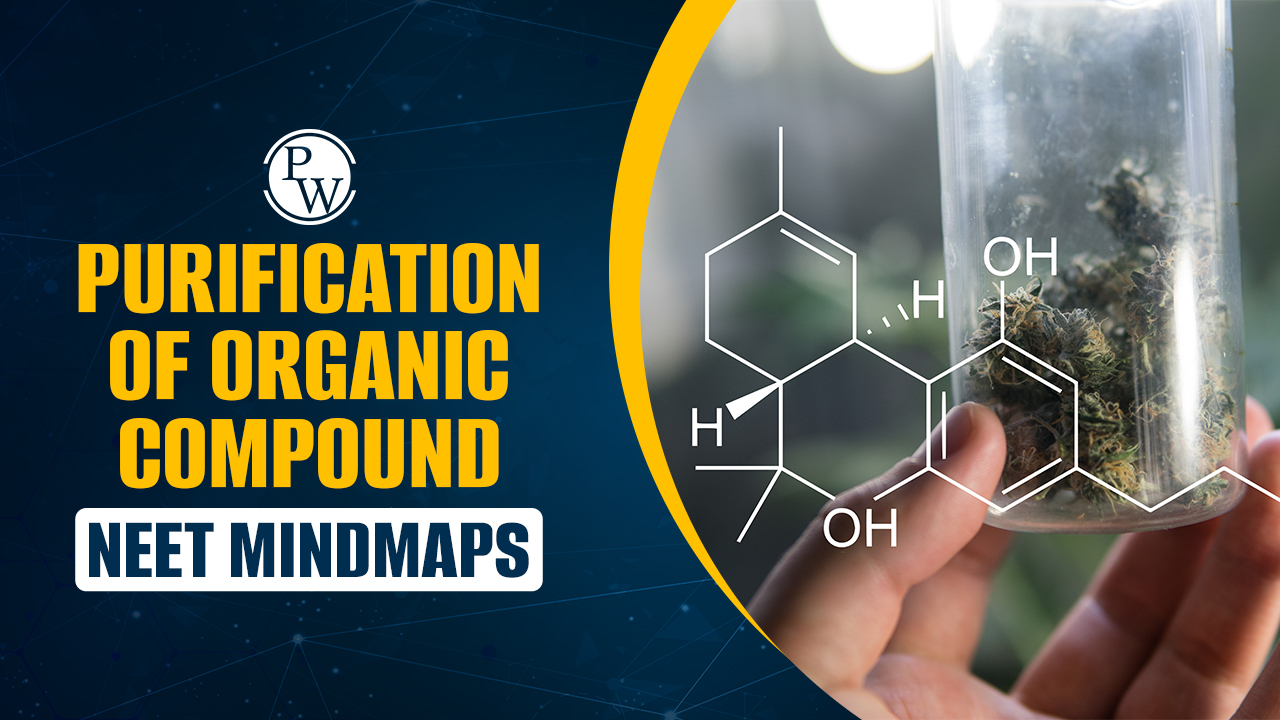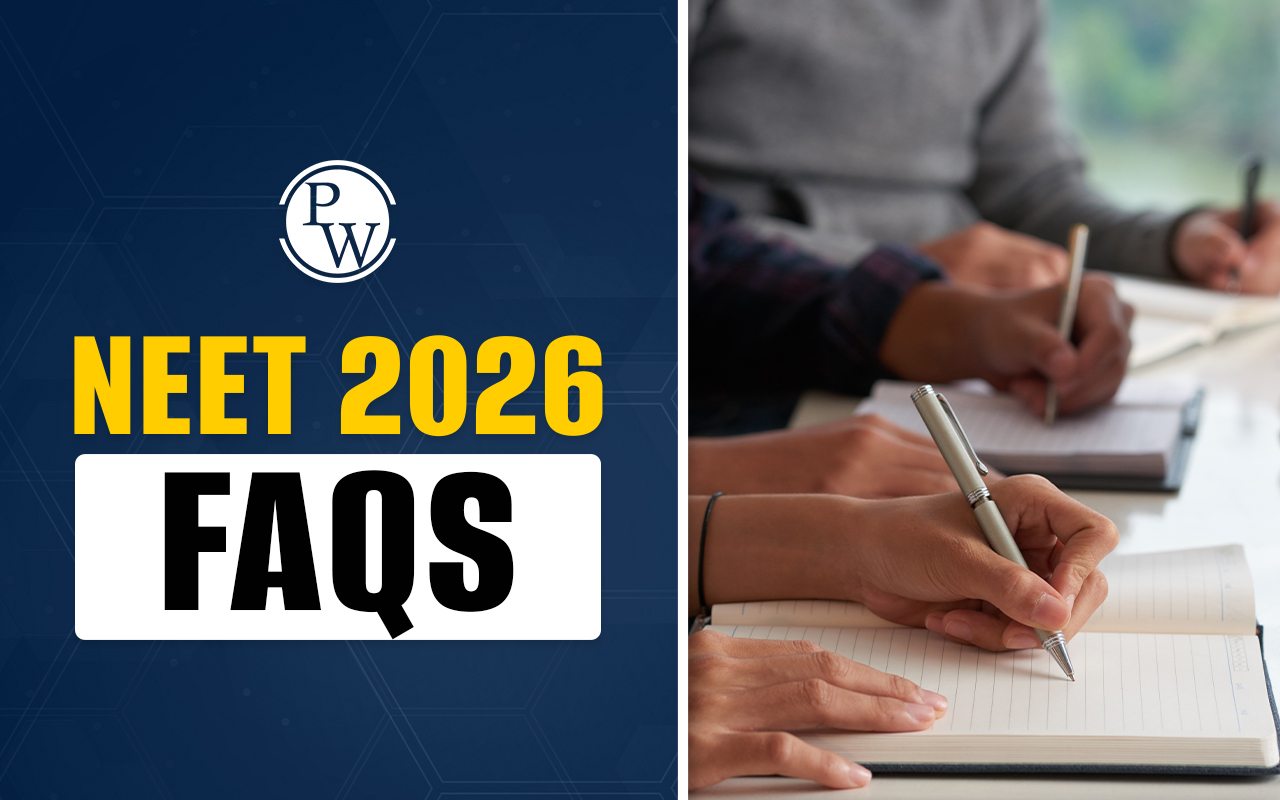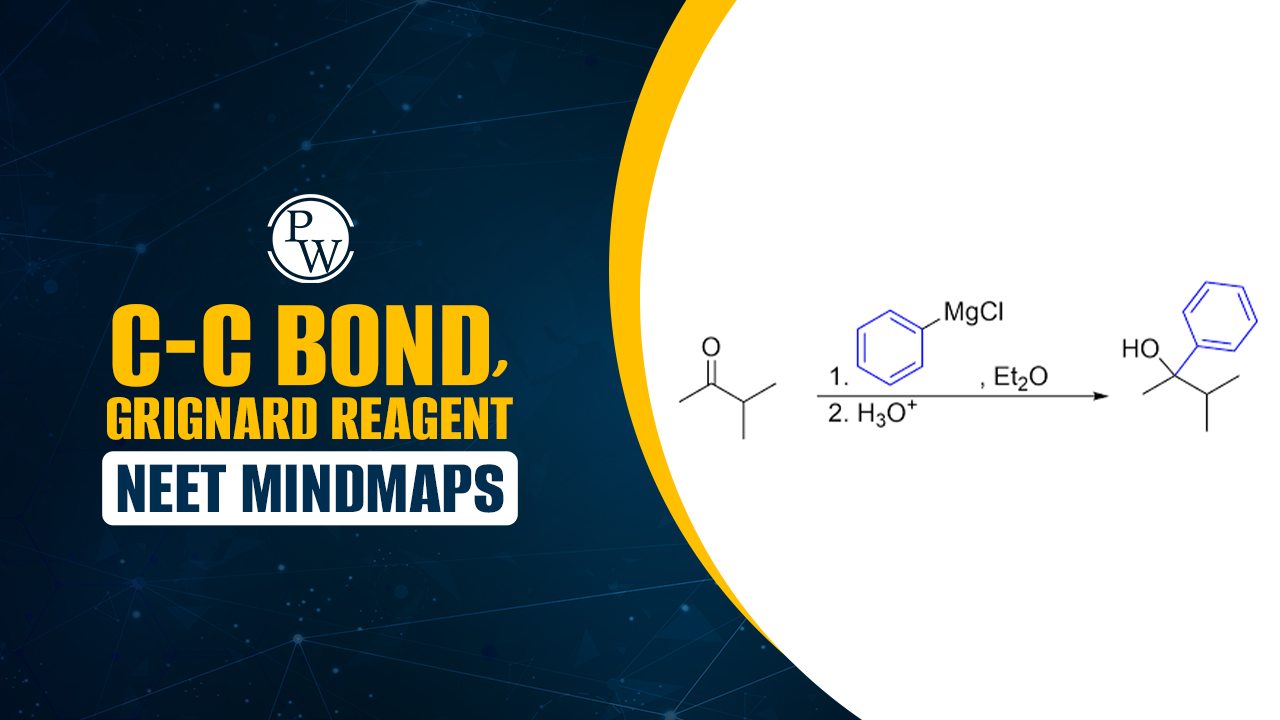
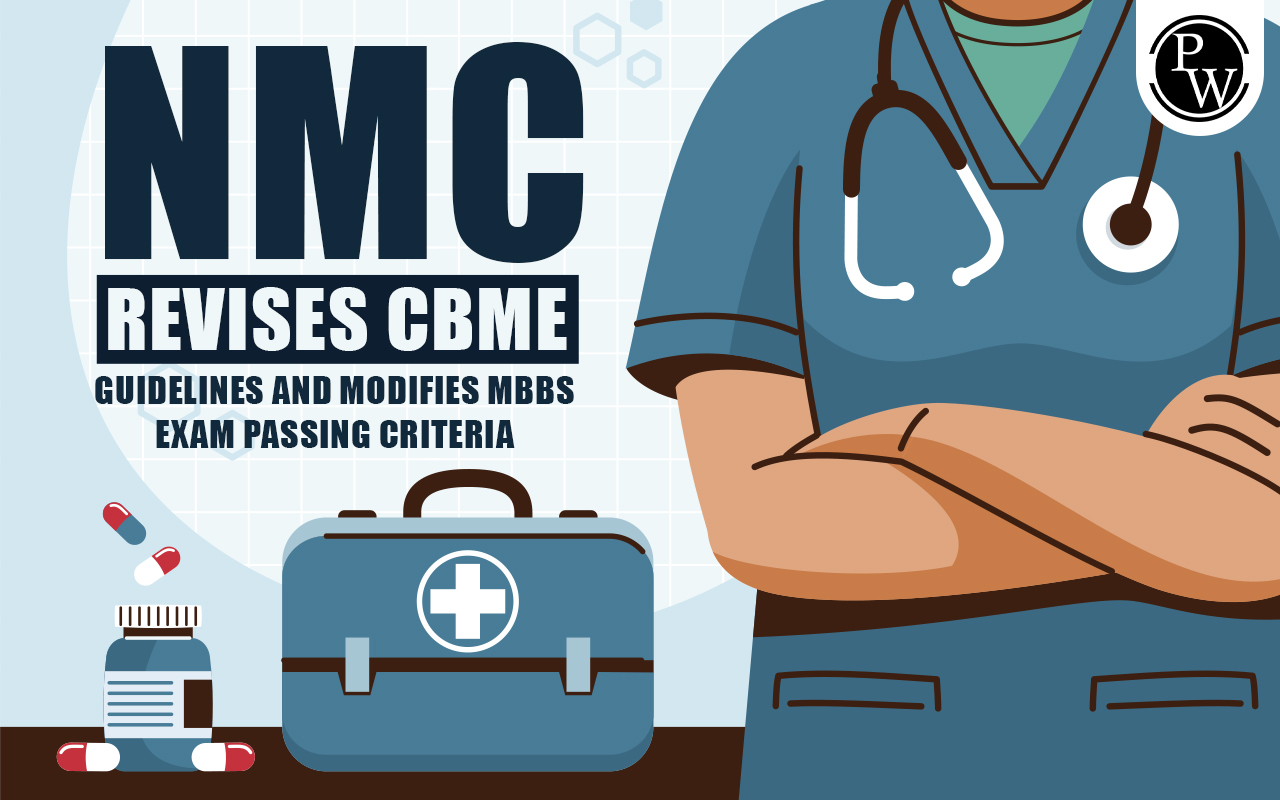
NMC Revised CBME Guidelines : The National Medical Commission (NMC) has changed the Competency-Based Medical Education (CBME) Curriculum, a significant advancement in medical education. These changes primarily focus on revising the criteria for passing the MBBS examination, aiming to simplify the evaluation process while ensuring that medical students receive comprehensive and relevant training.
NEET UG 2024 Application Form Out
NMC - Amendments to Passing Criteria
Students now need 40% marks to pass subjects with two papers, which is easier than before. For a fair assessment, they must also get a balanced score in the theory and practical parts. The specifics are provided below.Previous Passing Criteria
In the previously published CBME Curriculum Guidelines, released by the Apex Medical Commission on August 01, 2023, students pursuing MBBS were required to secure a minimum of 50% marks in aggregate for subjects comprising two papers to pass.New Passing Criteria
However, in a departure from the earlier rule, NMC has lowered the minimum passing percentage to 40%. According to the revised guidelines, in subjects that consist of two papers, students must secure a minimum of 40% marks in aggregate (for both papers combined) to successfully pass the subject.Modifications in Subject Passing Criteria
In addition to the changes in aggregate passing criteria, significant amendments have been introduced in the criteria for passing individual subjects. The previous guidelines stipulated that candidates must obtain 50% marks separately in both the Theory and Practical components of University-conducted examinations to be declared as passed in a particular subject.New Subject Passing Criteria
With the latest amendment, NMC has clarified that candidates now only need to achieve 50% marks in aggregate, with a minimum distribution of 60:40 or 40:60 in Theory and Practical components, respectively, to pass the subject.NMC Notification of Changes for MBBS Course
The NMC Undergraduate Medical Education Board issued a corrigendum on September 1, 2023, to communicate these changes effectively. This corrigendum is an official notification to inform all stakeholders about the previous and newly modified rules for passing a subject in the MBBS course. Please refer to the NMC Corrigendum available through the provided link for more detailed information.NMC Revised CBME Guidelines Curriculum
The final CBME curriculum for the MBBS course encompasses various essential aspects:Objectives
The curriculum aligns with the Indian Graduate Medical Training Programme, National Goals for Indian Medical Graduates, Institutional Goals, Goals for the Learner, and Competency-Based Training Programme for Indian Medical Graduates. It ensures that medical students are well-prepared to meet these objectives.Subject-Specific Objectives
The curriculum delineates competencies, broad subject-specific objectives, and skills for different professional year subjects, covering a wide range of areas, including Anatomy, Physiology, Biochemistry, Pathology, Microbiology, Pharmacology, Forensic Medicine, Toxicology, Community Medicine, Otorhinolaryngology (ENT), Ophthalmology, General Medicine, Pediatrics, Dermatology, Psychiatry, General Surgery, Obstetrics and Gynaecology, Orthopedics, Anaesthesiology, and Radiodiagnosis.Professional Development
The curriculum outlines the training period's time distribution and introduces new teaching/learning elements. These include foundation courses, early clinical exposure, electives, Professional Development (including Attitude, Ethics, and Communication Module), and the Learner-doctor method of clinical training (Clinical Clerkship).Evaluation and Eligibility for Professional Exams
The revised CBME curriculum delves into various aspects of assessment, including attendance, internal assessment, university examinations, and the appointment of examiners. These measures are implemented to ensure the comprehensive evaluation of student's progress and readiness for professional examinations.AETCOM Competencies are now included
The regulations incorporate AETCOM (Attitude, Ethics, and Communication Module) competencies for first, second, and third-year MBBS students. This inclusion emphasizes the development of well-rounded medical professionals.Detailed Tables and Formats
The new regulations provide detailed tables specifying time distribution, examination schedules, subject distribution in each Professional Phase, Foundation Course details, and subject-wise teaching hours for 1st, 2nd, and final year MBBS. Additionally, it outlines clinical posting schedules in weeks, the learner-doctor program, mark distribution for various subjects in University annual examinations, and subject-wise formats for marking students in theory and practical examinations.Family Adoption Program
The curriculum introduces a Family Adoption Program, which outlines targets, competencies, suggested teaching-learning methods, assessment methods, and teaching hours. Furthermore, it includes a log book for Family Adoption, capturing essential information such as college and university details, student information, mentorship details, and Asha worker experiences.Manpower Guidelines and Disability Inclusion
The regulations also provide guidelines for research facilities in medical colleges and address the admission of students with "specified disabilities" under the Rights of Persons with Disabilities Act, 2016, concerning MBBS admissions.Phases of the MBBS Course
The 4.5-year MBBS course is divided into three distinct phases:- Phase I (First Professional): This initial 12-month phase comprises a Foundation Course of one week, followed by university exams.
- Phase II (Second Professional): The 12-month Phase II includes university examinations to acquire medical knowledge and skills.
- Phase III (Third Professional): Phase III spans 30 months and is further divided into Third Professional Part I (12 months) and Part II (18 months). Part I includes university exams, while Part II extends the clinical training phase.
NMC Revised CBME Guidelines FAQs
Q 1. What are the key changes in NMC's revised CBME guidelines for passing the MBBS examination? Ans. The minimum passing percentage for subjects with two papers has been reduced from 50% to 40%. Additionally, candidates are now required to obtain 50% marks in aggregate with a minimum distribution of 60:40 or 40:60 in Theory and Practical components. Q 2. When were these changes announced, and how were they communicated to stakeholders? Ans. The changes were announced on September 01, 2023, through a corrigendum issued by the NMC Undergraduate Medical Education Board, notifying stakeholders about the previous and modified rules. Q 3. What does the revised CBME curriculum encompass for MBBS students? Ans. The curriculum includes objectives, subject-specific objectives, skills for various professional year subjects, and details on training, time distribution, and teaching/learning elements such as foundation courses, clinical exposure, and electives. Q 4. How is the MBBS course divided into phases under the revised curriculum? Ans. The MBBS course is divided into three phases: Phase I (First Professional - 12 months), Phase II (Second Professional - 12 months), and Phase III (Third Professional - 30 months, further divided into Part I and Part II). Q 5. What additional elements are covered in the revised CBME curriculum besides passing criteria and subject-specific objectives? Ans . The curriculum includes tables and formats specifying time distribution, examination schedules, subject distribution, teaching hours, clinical posting schedules, and marking formats. It also introduces the Family Adoption Program and addresses guidelines for research facilities and disability inclusion in MBBS admissions.Check NEET UG Important Links
What are the key changes in NMC's revised CBME guidelines for passing the MBBS examination?
The minimum passing percentage for subjects with two papers has been reduced from 50% to 40%. Additionally, candidates are now required to obtain 50% marks in aggregate with a minimum distribution of 60:40 or 40:60 in Theory and Practical components.
When were these changes announced, and how were they communicated to stakeholders?
The changes were announced on September 01, 2023, through a corrigendum issued by the NMC Undergraduate Medical Education Board, notifying stakeholders about the previous and modified rules.
What does the revised CBME curriculum encompass for MBBS students?
The curriculum includes objectives, subject-specific objectives, skills for various professional year subjects, and details on training, time distribution, and teaching/learning elements such as foundation courses, clinical exposure, and electives.
How is the MBBS course divided into phases under the revised curriculum?
The MBBS course is divided into three phases: Phase I (First Professional - 12 months), Phase II (Second Professional - 12 months), and Phase III (Third Professional - 30 months, further divided into Part I and Part II).
What additional elements are covered in the revised CBME curriculum besides passing criteria and subject-specific objectives?
The curriculum includes tables and formats specifying time distribution, examination schedules, subject distribution, teaching hours, clinical posting schedules, and marking formats. It also introduces the Family Adoption Program and addresses guidelines for research facilities and disability inclusion in MBBS admissions.
🔥 Trending Blogs
Talk to a counsellorHave doubts? Our support team will be happy to assist you!

Check out these Related Articles
Free Learning Resources
PW Books
Notes (Class 10-12)
PW Study Materials
Notes (Class 6-9)
Ncert Solutions
Govt Exams
Class 6th to 12th Online Courses
Govt Job Exams Courses
UPSC Coaching
Defence Exam Coaching
Gate Exam Coaching
Other Exams
Know about Physics Wallah
Physics Wallah is an Indian edtech platform that provides accessible & comprehensive learning experiences to students from Class 6th to postgraduate level. We also provide extensive NCERT solutions, sample paper, NEET, JEE Mains, BITSAT previous year papers & more such resources to students. Physics Wallah also caters to over 3.5 million registered students and over 78 lakh+ Youtube subscribers with 4.8 rating on its app.
We Stand Out because
We provide students with intensive courses with India’s qualified & experienced faculties & mentors. PW strives to make the learning experience comprehensive and accessible for students of all sections of society. We believe in empowering every single student who couldn't dream of a good career in engineering and medical field earlier.
Our Key Focus Areas
Physics Wallah's main focus is to make the learning experience as economical as possible for all students. With our affordable courses like Lakshya, Udaan and Arjuna and many others, we have been able to provide a platform for lakhs of aspirants. From providing Chemistry, Maths, Physics formula to giving e-books of eminent authors like RD Sharma, RS Aggarwal and Lakhmir Singh, PW focuses on every single student's need for preparation.
What Makes Us Different
Physics Wallah strives to develop a comprehensive pedagogical structure for students, where they get a state-of-the-art learning experience with study material and resources. Apart from catering students preparing for JEE Mains and NEET, PW also provides study material for each state board like Uttar Pradesh, Bihar, and others
Copyright © 2025 Physicswallah Limited All rights reserved.



